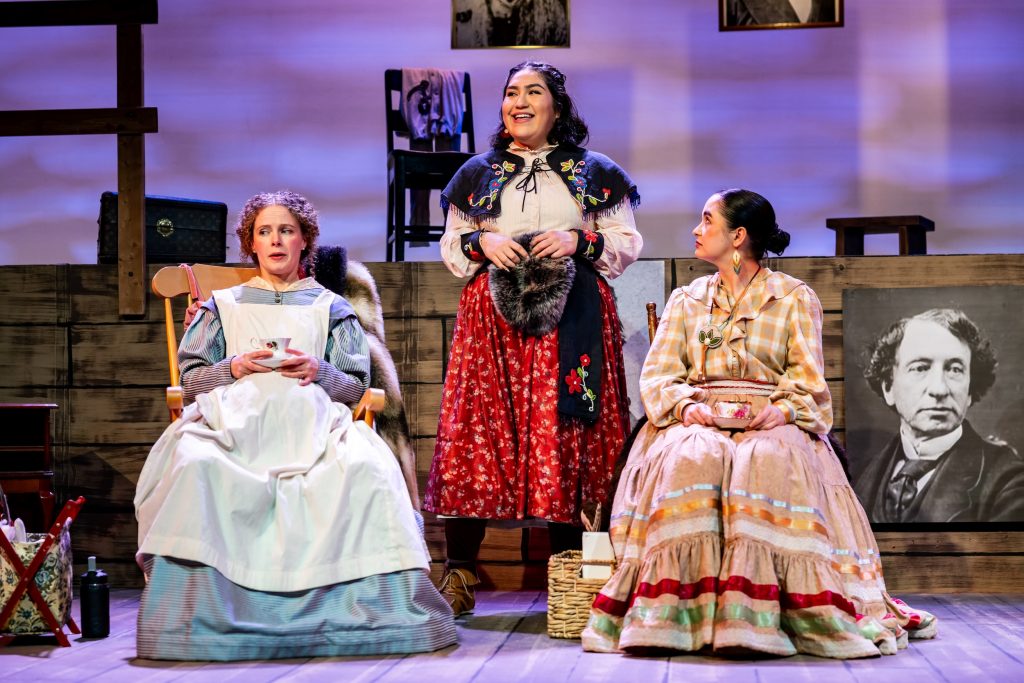
Credit: Jon Benjamin
Firehall Arts Centre. Held over to March 2, 2025
Tickets from $30 at 604-689-0926 or www.firehallartscentre.ca
Posted February 17, 2025
History is almost always told from the point of view of men – the explorers, conquerors, adventurers, rulers, etcetera. There are, of course, exceptions but the tales told to kids in history class seldom mention women except as they relate to men. Perhaps stories exist about Mrs. John A. MacDonald but when I went to school not only was Canadian history given short shrift but Canadian women, even less. Oh, there was that one who had the chocolates named after her – Laura Secord – but most of us probably know more about the truffles than the woman.
Anishinaabe/Slovene playwright Frances Koncan not only turns everything ass over tea kettle, but she creates three imaginary women to poke fun at Louis Riel and to trash the so-called Father of Confederation. What does the “A” in Sir John A. MacDonald stand for? “Asshole”.
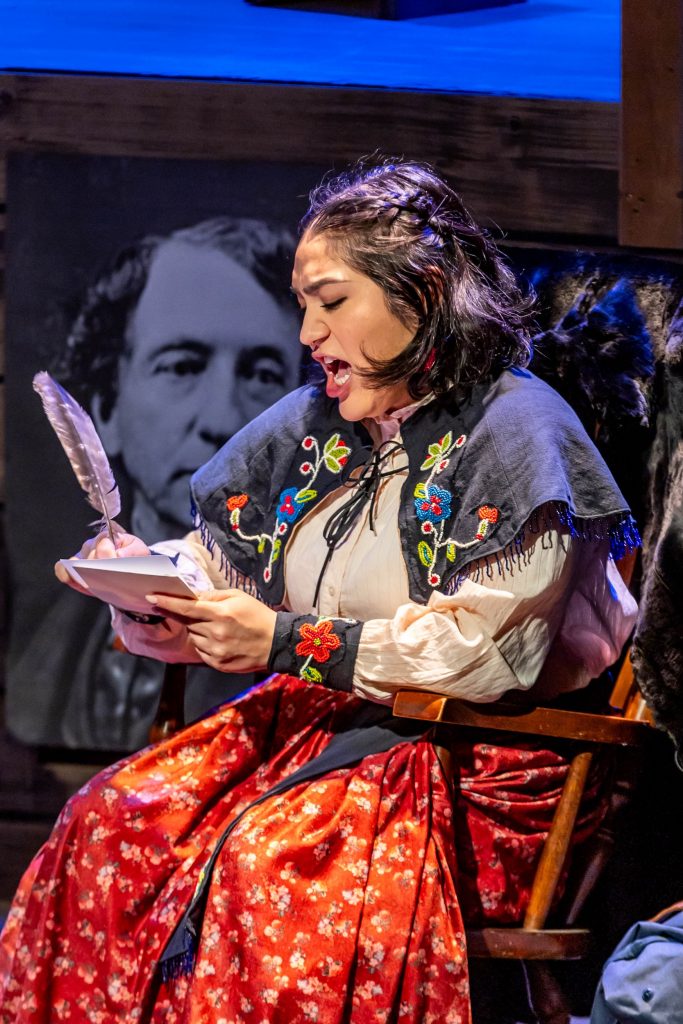
Credit: Jon Benjamin
We meet Cecilia (Kate Besworth), Marie-Angelique (Kaitlyn Yott) and Eugenia (Danica Charlie), all in fur coats, seated in rocking chairs, exchanging pleasantries while waiting for the tea to steep. Cecilia is white and prim and proper, a married ‘lady’ who thinks the job of a good wife is to wait quietly and patiently for her husband to come home. Métis Marie-Angelique (“I’m so bored”) fancies herself meeting Louis Riel (“He’s so hot”) and becoming Mrs. Louis Riel (who, history tells us, was already married with children.) Eugenia is First Nations, speaks little and has some history with Riel – possibly romantic.
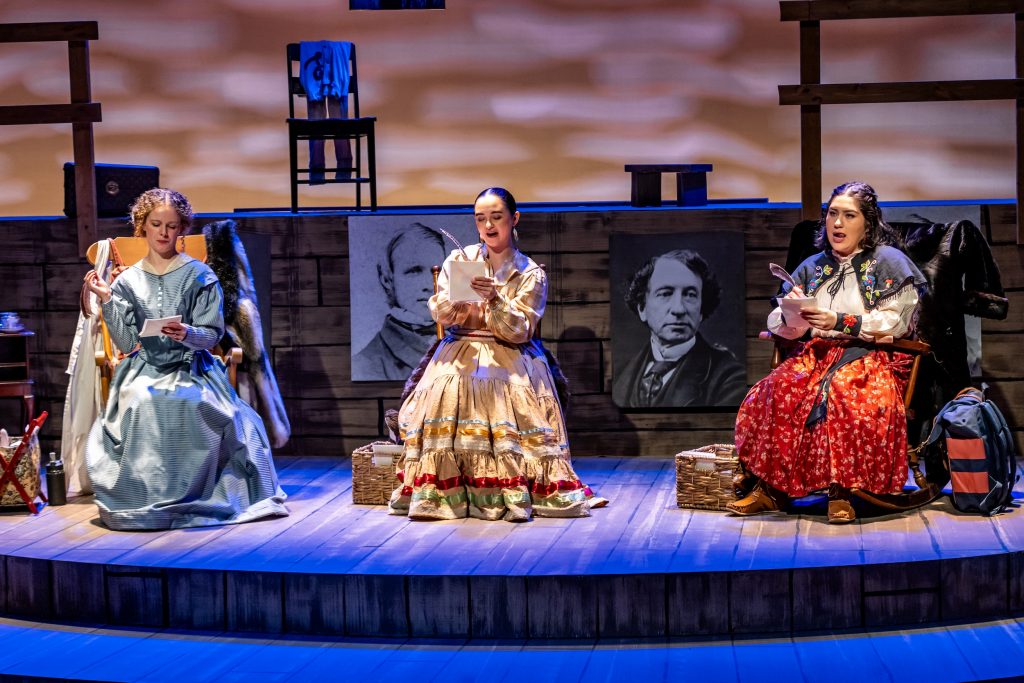
Set design: Kimira Reddy. Lighting design: Rebekah Johnson. Costume design: Emily Friesen
And there they sit, in a fort somewhere along the ‘Reddish’ River, rocking and talking about John A (“The least hot man on the planet,” according to Marie-Angelique), Riel (who describes himself as “a poet with a great mustache”) and what looks like the forthcoming showdown at the fort. Cecilia and Marie-Angelique cannot leave the fort; Eugenie, for some reason, comes and goes.
They rock, drink tea and write letters with their feathered quills: Cecilia to her husband; Marie-Angelique to Riel (Wayne Lavallee) who describes himself as “a poet with a great mustache”; and Eugenie to MacDonald. Marie-Angelique’s letters are intercepted by Thomas Scott (Evan Rein), an Irishman who hangs out with Riel as a sort of secretary.
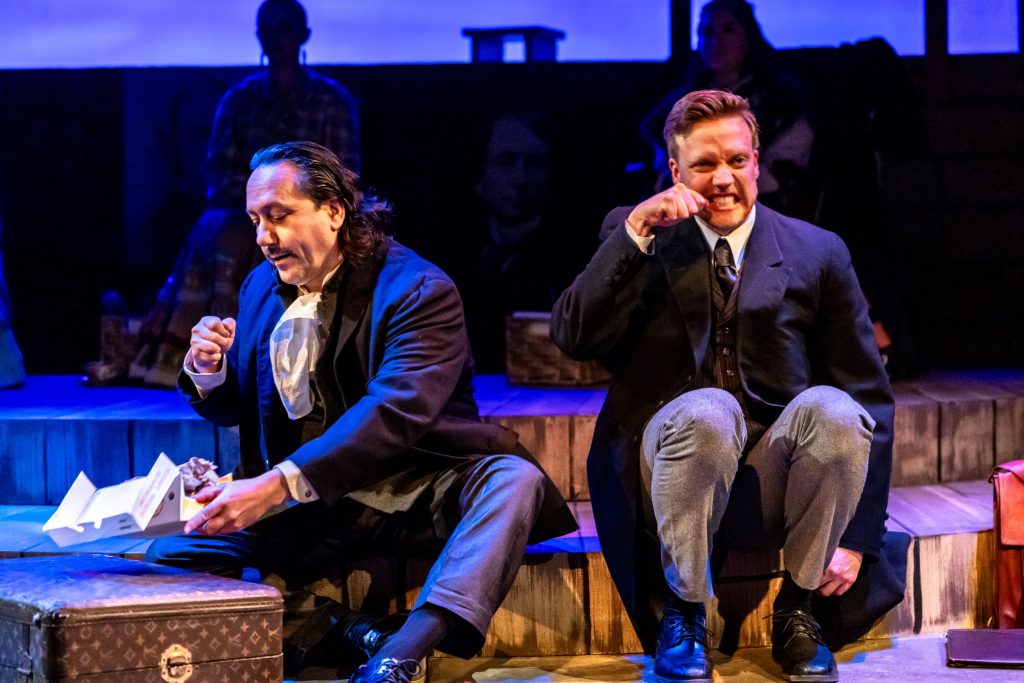
Credit: Jon Benjamin
Set designer Kimira Reddy places the women up on a wooden platform behind which are large black and white photos of John A, Riel and Scott. Emily Friesen provides the character-appropriate costumes: a very pretty blue gown and white pinafore for Cecilia; a cotton blouse and ribbon-skirt for Marie-Angelique; and a little embroidered cape affair and lace-up moccasins for Eugenie. Lighting is by Rebekah Johnson.
Completely irreverent and packed with snappy one-liners, Women of the Fur Trade gallops along under Donna Spencer’s direction. It’s a laugh-a-minute romp that just manages to sustain itself over two hours thanks to performers who, for the most part, understand the demands of satire.
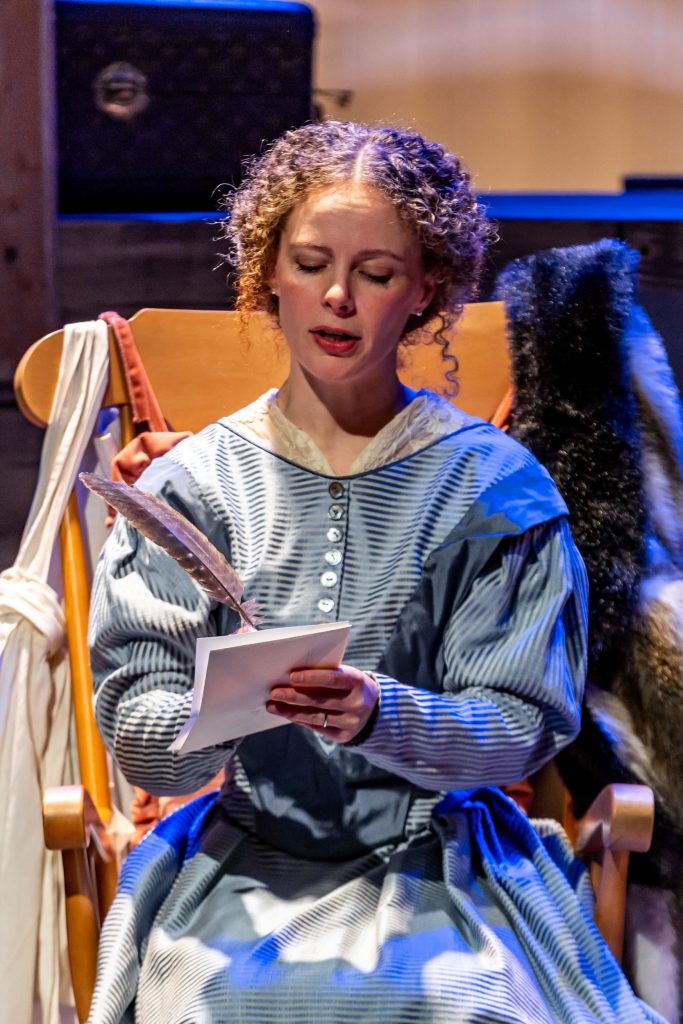
Credit: Jon Benjamin
In the program notes, playwright Koncan comments on the risks of writing a play about women just sitting in a room and talking. She goes on to mention the success of Miriam Toews’ Women Talking but the difference between Women of the Fur Trade and Women Talking is this: Toews’ women become real to us in a way that Koncan’s do not nor was it Koncan’s intention but it’s hard to invest fully in caricatures no matter how entertaining they are.
I realized, ironically, when the laughter died down that I really wanted to know more about Riel, or more specifically and after doing some reading, about Marguerite Monet, Riel’s wife of four years (1881-1885) and who bore three children, one of which was born and died on October 21, 1885, one month before Riel was hanged. Now there’s a piece of history that could use some dramatic exploration.
Despite the comic treatment of this period of Canadian history, a few serious lines linger. The best of these, spoken, I think by Riel, but which could also have been spoken by Eugenie, is this: “I believe in the land. I believe in the people.” These are words over which to wave the flag.

